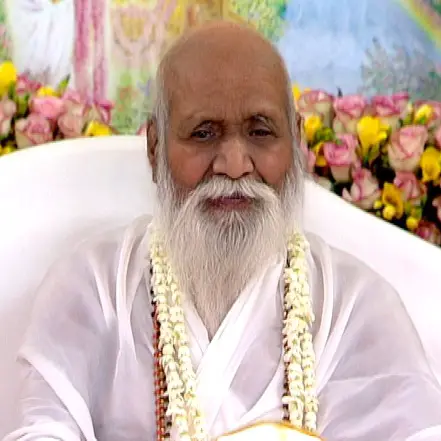People are increasingly turning to meditation techniques to find inner peace, balance, and relaxation. Among these techniques, Transcendental Meditation (TM) has gained immense popularity due to its simplicity and effectiveness in promoting deep relaxation and personal growth. At the core of TM practice lie specific mantras, which serve as powerful tools to facilitate a meditative state.
In this article we’ll explore the intriguing world of Transcendental Meditation mantras, examining their purpose, significance, and how they are assigned. Additionally, we’ll provide examples of simple sounds used in TM, while emphasizing the importance of receiving personalized guidance from a certified TM teacher to ensure the best possible meditation experience.

Table of Contents
Transcendental Meditation (TM) has been gaining popularity in recent years due to its numerous benefits, simplicity, and the reduced stress it brings to those who practice it. In this article, we will delve deep into the world of Transcendental Meditation mantras, discovering their origins, types, and how to practice TM effectively. Let’s get started!
What is TM?
Transcendental Meditation is a meditation technique developed by Maharishi Mahesh Yogi in the 1950s. It involves the use of a mantra, which is a specific sound or phrase, to help the practitioner achieve a state of deep relaxation and heightened awareness. This technique is practiced for 15-20 minutes twice a day and is known for its simplicity and effectiveness.
TM Mantras
The role of mantras in TM
Mantras play a crucial role in Transcendental Meditation. They act as a vehicle for the mind to dive deep into its silent, innermost state. By repeating the mantra silently during meditation, the mind becomes effortlessly focused, allowing the practitioner to experience a state of deep relaxation and expanded consciousness.
Origin of TM mantras
TM mantras are derived from the ancient Vedic tradition of India. These mantras have been used for thousands of years to promote spiritual growth and transformation. Maharishi Mahesh Yogi selected specific mantras for their effectiveness and suitability for use in Transcendental Meditation.
Types of TM mantras
Age specific mantras
In TM, mantras are assigned based on the age of the practitioner. This is because different mantras resonate with different stages of life and personal development. Your TM teacher will provide you with a mantra suitable for your age group.
Syllable based mantras
TM mantras are also categorized based on the number of syllables they contain. These mantras can range from one to several syllables, with the idea that the vibrations created by the sounds help to calm the mind and promote a meditative state.
Examples
Here is an expanded list of examples of mantras that have been reportedly used in TM, along with a basic description:
- Aing – A simple, one-syllable sound that is easy to repeat and helps the practitioner focus.
- Shiring – A two-syllable mantra that resonates with a gentle, soothing energy.
- Shiam – A soft, calming mantra that promotes a sense of inner peace.
- Hirim – A mantra that creates a harmonious vibration and helps to balance the mind.
- Kiring – A two-syllable mantra that encourages a sense of grounding and stability.
- Sham – A simple, single-syllable sound that is easy to focus on and aids in relaxation.
- Shirim – A gentle mantra that helps to calm the mind and promote a sense of tranquility.
- Aim – A single-syllable mantra that is easy to repeat and helps the practitioner maintain focus.
- Shama – A soothing mantra that brings about a sense of inner calm and stillness.
- Shyama – A mantra that evokes a sense of balance and harmony within the practitioner.
- Yaim – A single-syllable mantra that is easy to focus on and helps to create a sense of calm.
- Shyam – A two-syllable mantra that evokes a sense of peace and inner harmony.
- Raim – A gentle, single-syllable sound that promotes mental balance and clarity.
- Ksham – A two-syllable mantra that fosters a sense of grounding and centeredness.
- Gyem – A simple mantra that assists in focusing the mind and achieving a state of deep relaxation.
- Hrum – A soothing sound that helps to calm the mind and promote emotional balance.
- Vaim – A single-syllable mantra that encourages mental clarity and focus.
- Shyem – A calming sound that brings about a sense of inner tranquility and stillness.
- Klem – A mantra that helps to create a sense of balance and harmony within the practitioner.
- Saim – A single-syllable sound that is easy to repeat and helps the practitioner maintain focus during meditation.
- Faim – A single-syllable mantra that promotes a sense of focus and mental clarity.
- Naim – A simple sound that helps to bring about a sense of calm and inner peace.
- Maim – A single-syllable mantra that encourages a state of relaxation and mental balance.
- Laim – A soothing sound that fosters a sense of tranquility and emotional harmony.
- Paim – A single-syllable mantra that helps to maintain focus during meditation.
- Taim – A simple sound that promotes a sense of inner stillness and centeredness.
- Baim – A single-syllable mantra that encourages mental clarity and focus.
- Zaim – A calming sound that helps to create a sense of balance and harmony within the practitioner.
- Jaim – A mantra that assists in focusing the mind and achieving a state of deep relaxation.
- Yum – A single-syllable sound that is easy to repeat and helps the practitioner maintain focus during meditation.
Ancient Vedic Mantras used in TM
TM also uses ancient Vedic mantras, some examples are included below:
- Gayatri Mantra: Om, we meditate on the divine light of the creator, who has created the realms of earth, air, and heavens. May this supreme consciousness enlighten our intellect and inspire us.
- Maha Mrityunjaya: Om, we worship the three-eyed Lord Shiva, who is fragrant and nourishes all beings. As the ripe cucumber is freed from its bondage, may He liberate us from death for the sake of immortality.
- Saraswati Mantra: May the goddess Saraswati, who is as white as the jasmine flower, the moon, and the snow, and who is dressed in white attire, protect me. She is seated on a white lotus and holds a musical instrument. She is always worshiped by Brahma, Vishnu, Shiva, and other deities. O divine mother, please remove my ignorance and bestow knowledge upon me.
How to practice TM
Choosing your TM mantra
It’s essential to have a mantra that resonates with you, as it will be your companion during your meditation practice. Your TM teacher will assign you a mantra based on your age and other factors. Remember, your mantra is meant to be kept private and should not be shared with others.
Receiving your TM mantra from a teacher
In the TM tradition it is crucial to receive your mantra from a certified TM teacher. The teacher will provide you with the necessary guidance and instruction to ensure that you can practice TM effectively. This personalized approach ensures that your meditation experience is tailored to your specific needs.
The TM technique
Once you have your TM mantra, you can begin practicing the technique. Here’s a simple step-by-step guide:
- Find a comfortable and quiet place to sit with your eyes closed.
- Silently repeat your mantra in your mind, without focusing on its meaning or pronunciation.
- Allow your mind to effortlessly flow with the mantra, letting go of any thoughts that may arise.
- If your mind wanders, gently bring it back to the mantra.
- Continue this process for 15-20 minutes, and then gradually bring your awareness back to your surroundings.
Benefits
Transcendental Meditation offers a wide range of benefits to its practitioners. These benefits can be grouped into three main categories: mental, physical, and emotional.
Mental benefits
TM has been shown to improve cognitive function, memory, and creativity. It also helps to reduce mental fatigue, allowing the mind to stay focused and sharp throughout the day.
Physical benefits
Regular practice of TM has been linked to lower blood pressure, improved heart health, and better sleep quality. Additionally, it can help to reduce chronic pain and strengthen the immune system.
Emotional benefits
Practicing TM can help to alleviate stress, anxiety, and depression by promoting a state of deep relaxation and mental clarity. It also fosters emotional stability and resilience, allowing practitioners to better navigate life’s challenges.
Effortless Technique:
What sets TM apart from other meditation techniques is its simplicity and ease of practice. TM requires no concentration, contemplation, or mental effort. Instead, the practitioner is instructed to sit comfortably with their eyes closed and effortlessly repeat their assigned mantra. This process allows the mind to naturally settle into a quieter, more profound state of consciousness, without having to force or control the thoughts.
Scientifically Proven Benefits
Numerous scientific studies have documented the positive effects of practicing Transcendental Meditation. Some of the most notable benefits include reduced stress and anxiety, improved mental clarity and focus, increased creativity, better emotional well-being, enhanced memory, and a stronger immune system. Additionally, TM has been shown to lower blood pressure, reduce the risk of heart disease, and increase overall longevity.
The Seven States of Consciousness:
A key aspect of TM is the exploration of the seven states of consciousness. These states include:
- Waking consciousness
- Dreaming
- Deep sleep
- Transcendental consciousness (experienced during TM practice)
- Cosmic consciousness (the integration of transcendental consciousness into daily life)
- God consciousness (the experience of refined perception)
- Unity consciousness (the ultimate state of oneness with everything)
Transcendental Meditation helps individuals progress through these various states of consciousness, enabling them to experience higher levels of awareness and self-realization.
TM and Personal Development:
TM is often seen as a powerful tool for personal growth and self-improvement. By regularly practicing TM, individuals can tap into their inner reservoir of creativity, intelligence, and potential. This heightened state of awareness can lead to improved decision-making, increased productivity, and an overall better quality of life.
TM vs other types of meditation
Transcendental Meditation differs from other meditation techniques in several ways. First, TM focuses on the use of a personalized mantra, while other techniques may involve breath awareness, visualization, or body scans. Second, TM is practiced for a specific duration (15-20 minutes) twice a day, whereas other practices may have more flexible schedules. Lastly, TM emphasizes effortless focus on the mantra, while other techniques may require more active concentration.
Conclusion
Transcendental Meditation mantras play a vital role in helping practitioners achieve deep relaxation and expanded awareness. By understanding their origins, types, and how to practice TM effectively, you can experience the many benefits of this powerful meditation technique. With regular practice, you can unlock your full potential and live a happier, healthier life.
Transcendental Meditation Mantras
Can I create my own TM mantra?
It’s recommended to receive your TM mantra from a certified teacher to ensure its effectiveness and suitability for your practice.
How long does it take to see the benefits of TM?
Some practitioners may experience benefits immediately, while others may notice improvements over time. Consistency and commitment to your practice are key.
Is TM a religious practice?
No, TM is a secular meditation technique that can be practiced by individuals of any religious or cultural background.
See Related Posts

Mantras to Live By

Best Mantras for Exams

Transcendental Meditation Mantras

Mental Wellness Mantras

Tara Mantra Benefits

Numerology and Mantras

Best Morning Mantras

Love Mantras

TV Sitcom Mantras

